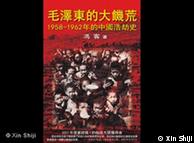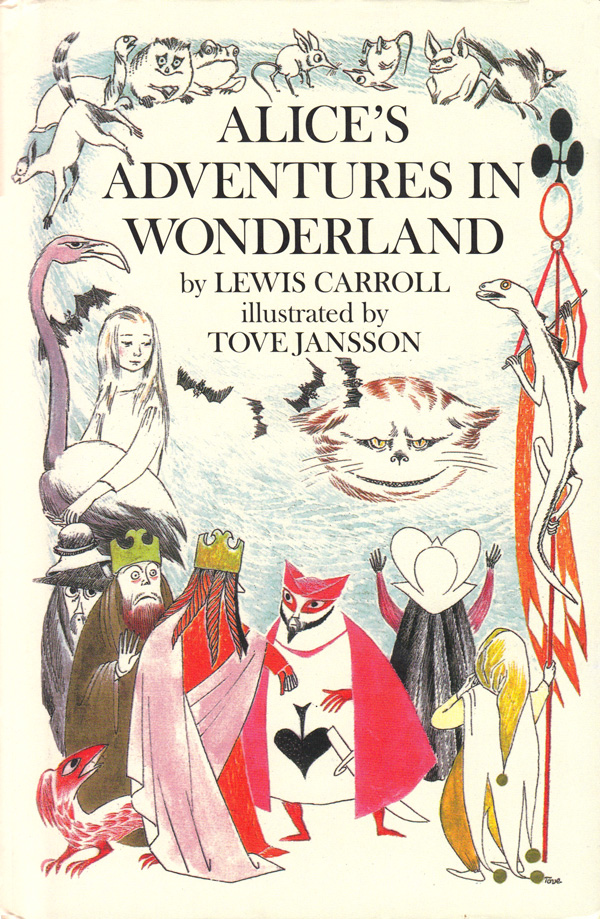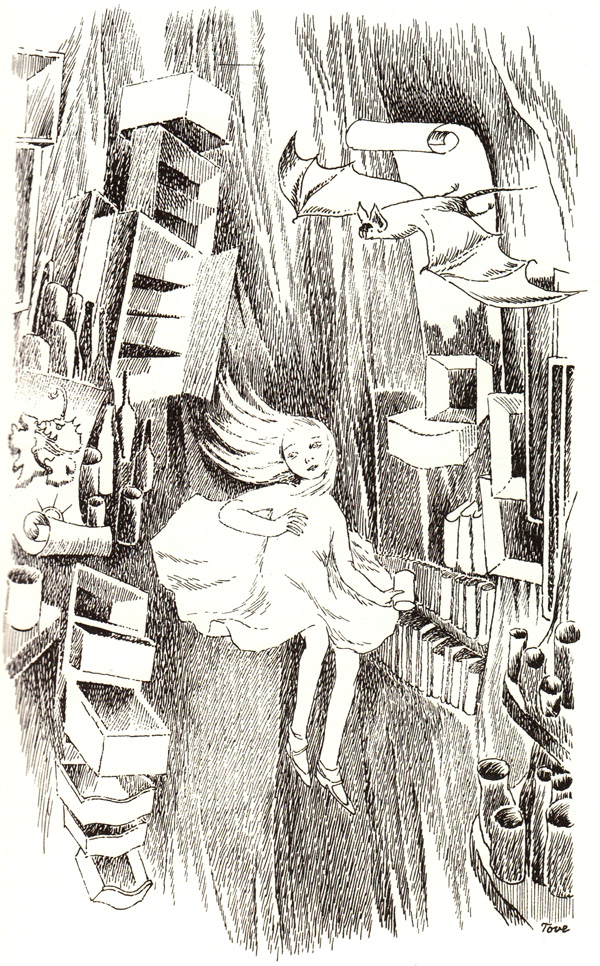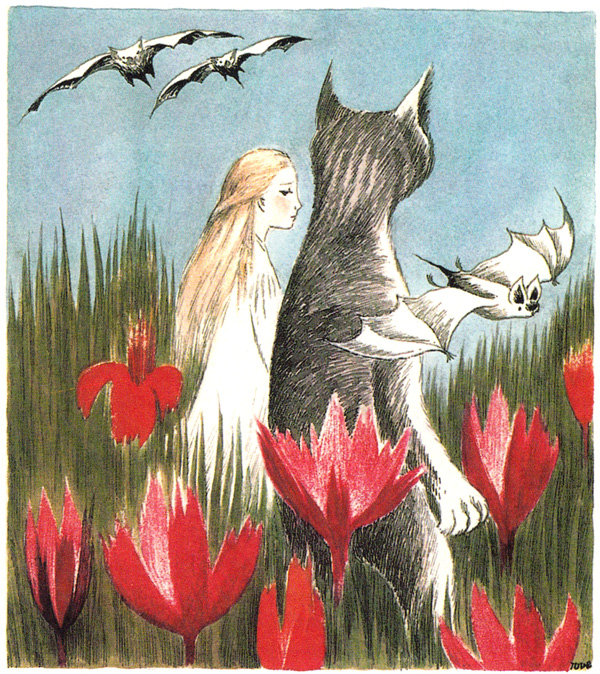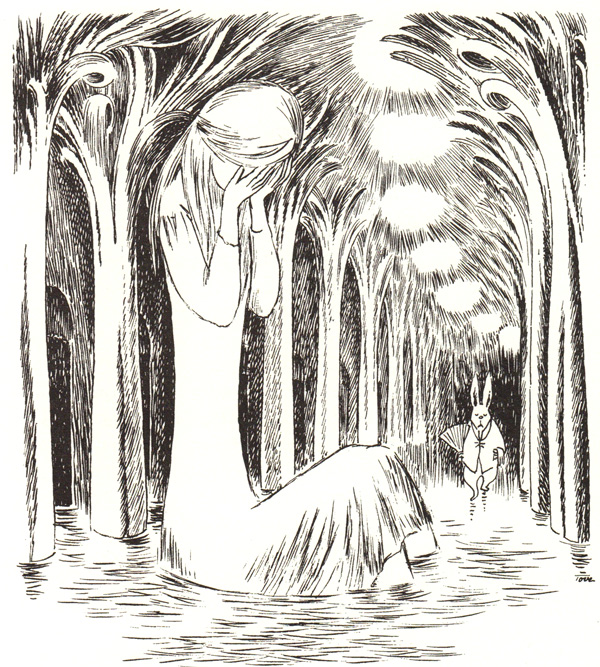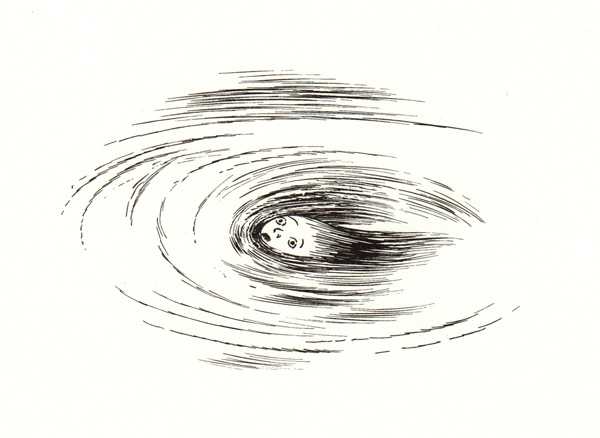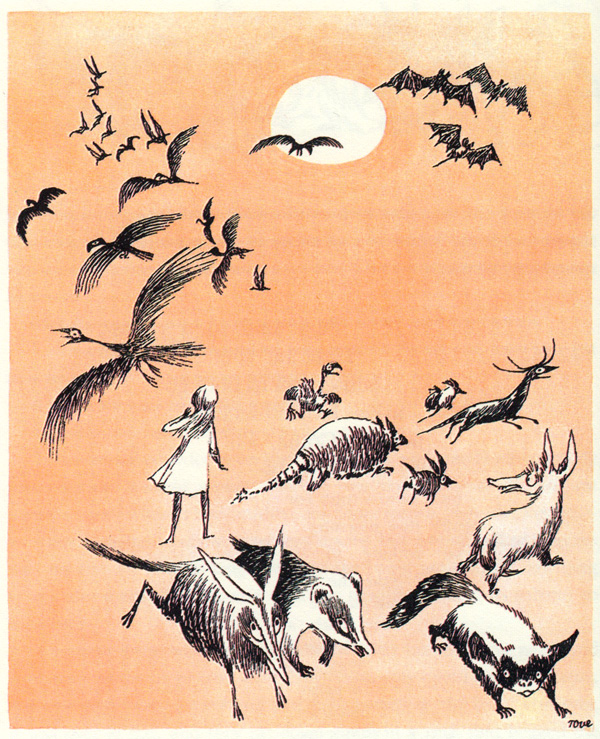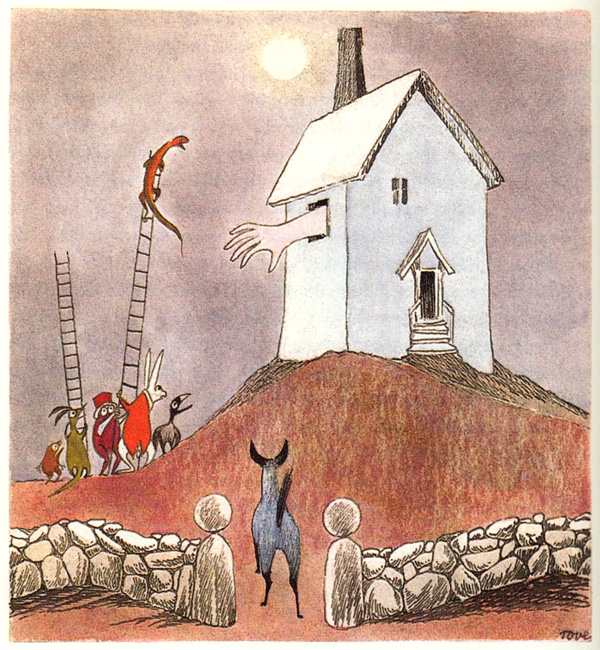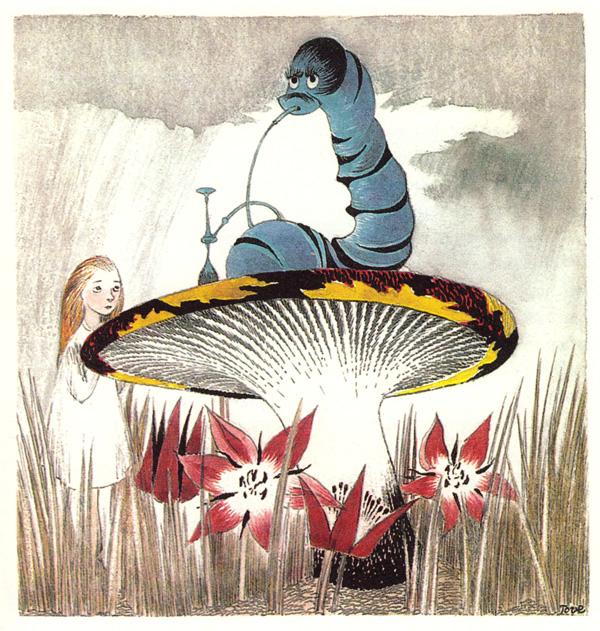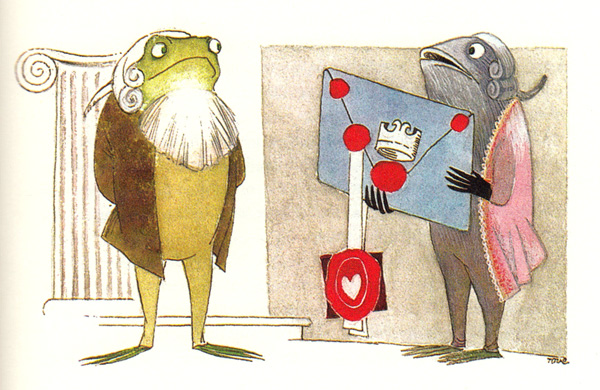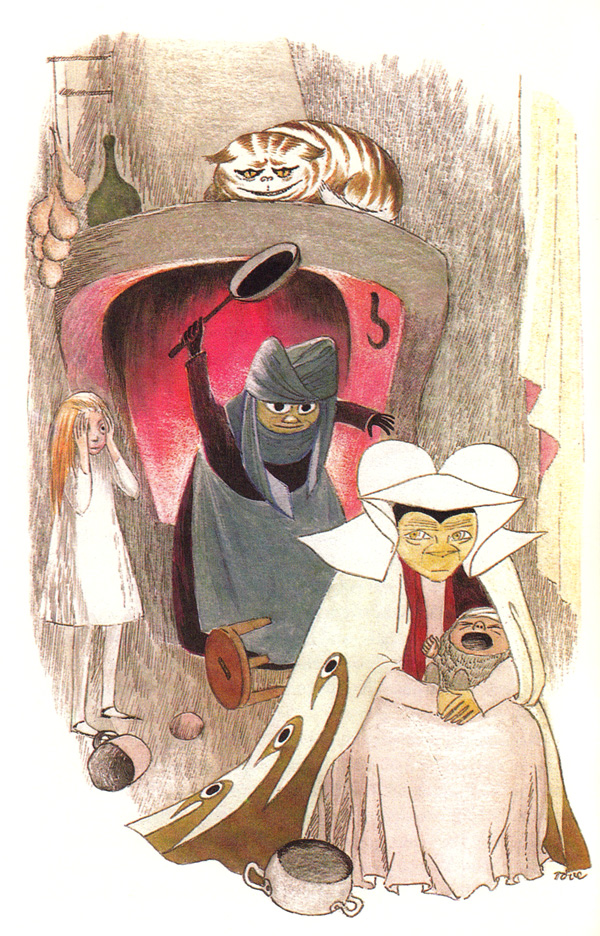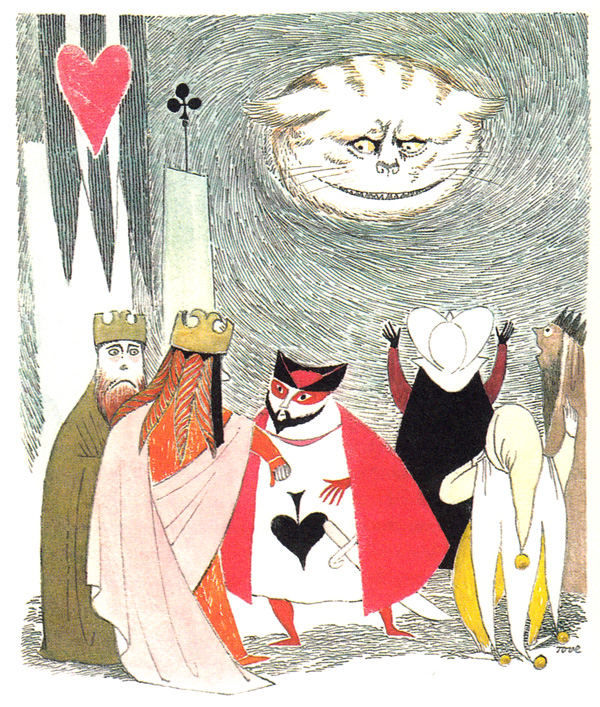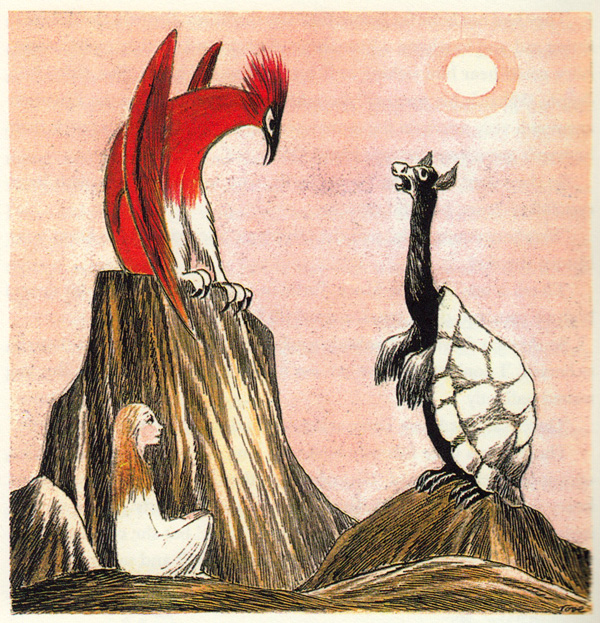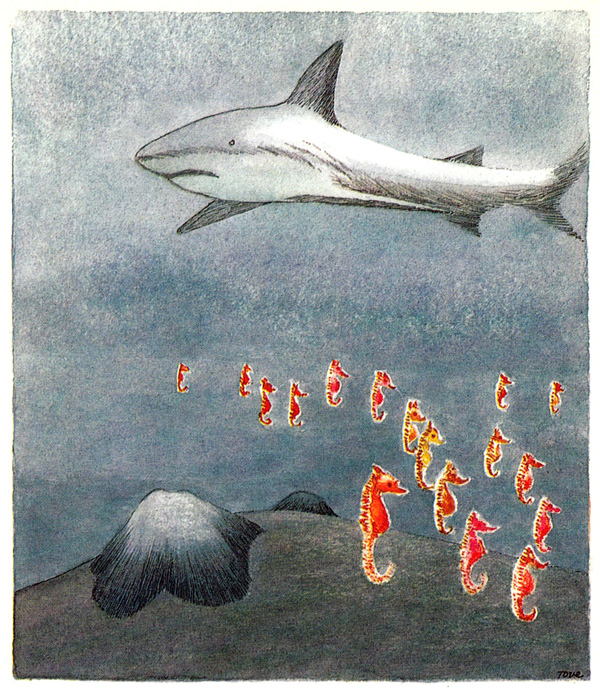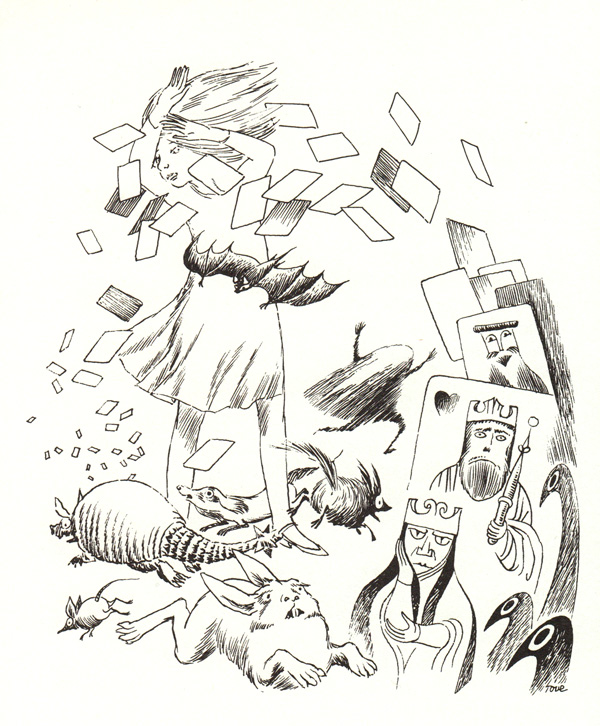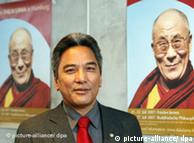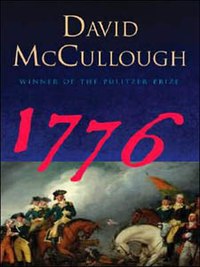Fragment of a letter from Boris Pasternak to a fellow poet:
“The melodic authenticity of most of your work is very dear to me, as is your faithfulness to the principle of melody and to “ascent” in the supreme sense that Alexander Blok gave that word.
"You will understand from a reading of my most recent works that I, too, am under the power of the same influence, but we must try to make sure that, as in Alexander Blok, this note works, reveals, incarnates, and expresses thoughts to their ultimate clarity, instead of being only a reminder of sounds which originally charmed us, an inconsequential echo dying in the air.”
I decided to visit Boris Pasternak about ten days after my arrival in Moscow one January. I had heard much about him from my parents, who had known him for many years, and I had heard and loved his poems since my earliest years.
I had messages and small presents to take to him from my parents and from other admirers. But Pasternak had no phone, I discovered in Moscow. I dismissed the thought of writing a note as too impersonal. I feared that in view of the volume of his correspondence he might have some sort of standard rejection form for requests to visit him. It took a great effort to call unannounced on a man so famous. I was afraid that Pasternak in later years would not live up to my image of him suggested by his poems—lyric, impulsive, above all youthful.
My parents had mentioned that when they saw Pasternak in 1957, just before he received the Nobel Prize, he had held open house on Sundays—a tradition among Russian writers which extends to Russians abroad. As an adolescent in Paris, I remember being taken to call on the writer Remizov and the famous philosopher Berdyayev on Sunday afternoons.
On my second Sunday in Moscow I suddenly decided to go to Peredelkino. It was a radiant day, and in the center of the city, where I stayed, the fresh snow sparkled against the Kremlin’s gold cupolas. The streets were full of sightseers—out-of-town families bundled in peasant-like fashion walking toward the Kremlin. Many carried bunches of fresh mimosa—sometimes one twig at a time. On winter Sundays large shipments of mimosa are brought to Moscow. Russians buy them to give to one another or simply to carry, as if to mark the solemnity of the day.
I decided to take a taxi to Peredelkino, although I knew of an electric train which went from the Kiev railroad station near the outskirts of Moscow. I was suddenly in a great hurry to get there, although I had been warned time and again by knowledgeable Muscovites of Pasternak’s unwillingness to receive foreigners. I was prepared to deliver my messages and perhaps shake his hand and turn back.
The cab driver, a youngish man with the anonymous air of taxi drivers everywhere, assured me that he knew Peredelkino very well—it was about thirty kilometers out on the Kiev highway. The fare would be about thirty rubles (about three dollars). He seemed to find it completely natural that I should want to drive out there on that lovely sunny day.
But the driver’s claim to know the road turned out to be a boast, and soon we were lost. We had driven at fair speed along the four-lane highway free of snow and of billboards or gas stations. There were a few discreet road signs but they failed to direct us to Peredelkino, and so we began stopping whenever we encountered anyone to ask directions. Everyone was friendly and willing to help, but nobody seemed to know of Peredelkino. We drove for a long time on an unpaved, frozen road through endless white fields. Finally we entered a village from another era, in complete contrast with the immense new apartment houses in the outskirts of Moscow—low, ancient-looking log cottages bordering a straight main street. A horse-drawn sled went by; kerchiefed women were grouped near a small wooden church. We found we were in a settlement very close to Peredelkino. After a ten-minute drive on a small winding road through dense evergreens I was in front of Pasternak’s house. I had seen photographs of it in magazines and suddenly there it was on my right: brown, with bay windows, standing on a slope against a background of fir trees and overlooking the road by which we had accidentally entered the town.
Peredelkino is a loosely settled little town, hospitable-looking and cheerful at sunny midday. Many writers and artists live in it year-round in houses provided, as far as I know, for their lifetimes, and there is a large rest home for writers and journalists run by the Soviet Writers’ Union. But part of the town still belongs to small artisans and peasants and there is nothing “arty” in the atmosphere.
Chukovsky, the famous literary critic and writer of children’s books, lives there in a comfortable and hospitable house lined with books—he runs a lovely small library for the town’s children. Constantin Fedin, one of the best known of living Russian novelists, lives next door to Pasternak. He is now the secretary general of the Writers’ Union—a post long held by Alexander Fadeev, who also lived here until his death in 1956. Later, Pasternak showed me Isaac Babel’s house, where he was arrested in the late 1930s and to which he never returned.
Pasternak’s house was on a gently curving country road which leads down the hill to a brook. On that sunny afternoon the hill was crowded with children on skis and sleds, bundled like teddy bears. Across the road from the house was a large fenced field—a communal field cultivated in summer; now it was a vast white expanse dominated by a little cemetery on a hill, like a bit of background out of a Chagall painting. The tombs were surrounded by wooden fences painted a bright blue, the crosses were planted at odd angles, and there were bright pink and red paper flowers half buried in the snow. It was a cheerful cemetery.
The house’s veranda made it look much like an American frame house of forty years ago, but the firs against which it stood marked it as Russian. They grew very close together and gave the feeling of deep forest, although there were only small groves of them around the town.
I paid the driver and with great trepidation pushed open the gate separating the garden from the road and walked up to the dark house. At the small veranda to one side there was a door with a withered, half-torn note in English pinned on it saying, “I am working now. I cannot receive anybody, please go away.” After a moment’s hesitation I chose to disregard it, mostly because it was so old-looking and also because of the little packages in my hands. I knocked, and almost immediately the door was opened—by Pasternak himself.
He was wearing an astrakhan hat. He was strikingly handsome; with his high cheek-bones and dark eyes and fur hat he looked like someone out of a Russian tale. After the mounting anxiety of the trip I suddenly felt relaxed—it seemed to me that I had never really doubted that I would meet Pasternak.
I introduced myself as Olga Andreev, Vadim Leonidovitch’s daughter, using my father’s semiformal name. It is made up of his own first name and his father’s, the short-story writer and playwright, Leonid, author of the play He Who Gets Slappedand The Seven That Were Hanged, etc. Andreev is a fairly common Russian name.
It took Pasternak a minute to realize that I had come from abroad to visit him. He greeted me with great warmth, taking my hand in both of his, and asking about my mother’s health and my father’s writing, and when I was last in Paris, and looking closely into my face in search of family resemblances. He was going out to pay some calls. Had I been a moment later I would have missed him. He asked me to walk part of the way with him—as far as his first stop, at the Writers’ Club.
While Pasternak was getting ready to go I had a chance to look around the simply furnished dining room into which I had been shown. From the moment I had stepped inside I had been struck by the similarity of the house to Leo Tolstoy’s house in Moscow, which I had visited the day before. The atmosphere in both combined austerity and hospitality in a way which I think must have been characteristic of a Russian intellectual’s home in the nineteenth century. The furniture was comfortable, but old and unpretentious. The rooms looked ideal for informal entertaining, for children’s gatherings, for the studious life. Although it was extremely simple for its period, Tolstoy’s house was bigger and more elaborate than Pasternak’s, but the unconcern about elegance or display was the same.
Usually, one walked into Pasternak’s house through the kitchen, where one was greeted by a tiny, smiling, middle-aged cook who helped to brush the snow off one’s clothes. Then came the dining room with a bay window where geraniums grew. On the walls hung charcoal studies by Leonid Pasternak, the writer’s painter father. There were life-studies and portraits. One recognized Tolstoy, Gorky, Scriabin, Rachmaninoff. There were sketches of Boris Pasternak and his brother and sisters as children, of ladies in big hats with veils. . . . It was very much the world of Pasternak’s early reminiscences, that of his poems about adolescent love.
Pasternak was soon ready to go. We stepped out into the brilliant sunlight and walked through the evergreen grove behind the house in rather deep snow which sifted into my low-cut boots.
Soon we were on a packed road, much more comfortable for walking although it had treacherous, icy patches. Pasternak took long, lanky steps. On particularly perilous spots he would take my arm; otherwise he gave all his attention to the conversation. Walks are an established part of life in Russia—like drinking tea or lengthy philosophical discussions—a part he apparently loved. We took what was obviously a very roundabout path to the Writers’ Club. The stroll lasted for about forty minutes. He first plunged into an elaborate discussion of the art of translating. He would stop from time to time to ask about the political and literary situations in France and in the United States. He said that he rarely read papers—“Unless I sharpen my pencil and glance over the sheet of newspaper into which I collect the shavings. This is how I learned last fall that there was a near revolution against de Gaulle in Algeria, and that Soustelle was ousted—Soustelle was ousted,” he repeated—a rough translation of his words, emphasizing both approval of de Gaulle’s decision and the similarity in the words as he spoke them. But actually he seemed remarkably well informed about literary life abroad; it seemed to interest him greatly.
From the first moment I was charmed and impressed by the similarity of Pasternak’s speech to his poetry—full of alliterations and unusual images. He related words to each other musically, without however at any time sounding affected or sacrificing the exact meaning. For somebody acquainted with his verse in Russian, to have conversed with Pasternak is a memorable experience. His word sense was so personal that one felt the conversation was somehow the continuation, the elaboration of a poem, a rushed speech, with waves of words and images following one another in a crescendo.
Later, I remarked to him on the musical quality of his speech. “In writing as in speaking,” he said, “the music of the word is never just a matter of sound. It does not result from the harmony of vowels and consonants. It results from the relation between the speech and its meaning. And meaning—content—must always lead.”
Often I found it difficult to believe that I was speaking to a man of seventy; Pasternak appeared remarkably young and in good health. There was something a little strange and forbidding in this youthfulness as if something—was it art?—had mixed itself with the very substance of the man to preserve him. His movements were completely youthful—the gestures of the hands, the manner in which he threw his head back. His friend, the poetess Marina Tsvetaeva, once wrote, “Pasternak looks at the same time like an Arab and like his horse.” And indeed, with his dark complexion and somehow archaic features Pasternak did have something of an Arabic face. At certain moments he seemed suddenly to become aware of the impact of his own extraordinary face, of his whole personality. He seemed to withdraw for an instant, half closing his slanted brown eyes, turning his head away, vaguely reminiscent of a horse balking.
I had been told by some writers in Moscow—most of them didn’t know him personally—that Pasternak was a man in love with his own image. But then I was told many contradictory things about him in the few days I spent in Moscow. Pasternak seemed a living legend—a hero for some, a man who had sold out to the enemies of Russia for others. Intense admiration for his poetry among writers and artists was universal. It was the title character of Doctor Zhivago that seemed most controversial. “Nothing but a worn-out intellectual of no interest whatsoever,” said a well-known young poet, otherwise very liberal-minded and a great admirer of Pasternak’s poetry.
In any event, I found that there was no truth to the charge that Pasternak was an egocentric. On the contrary, he seemed intensely aware of the world around him and reacted to every change of mood in people near him. It is hard to imagine a more perceptive conversationalist. He grasped the most elusive thought at once. The conversation lost all heaviness. Pasternak asked questions about my parents. Although he had seen them but a few times in his life, he remembered everything about them and their tastes. He recalled with surprising exactness some of my father’s poems which he had liked. He wanted to know about writers I knew—Russians in Paris, and French, and Americans. American literature seemed particularly to interest him, although he knew only the important names. I soon discovered that it was difficult to make him talk about himself, which I had hoped he would do.
As we walked in the sunshine, I told Pasternak what interest and admirationDoctor Zhivago had aroused in the West and particularly in the United States, despite the fact that in my and many others’ opinion the translation into English did not do justice to his book.
“Yes,” he said, “I am aware of this interest and I am immensely happy, and proud of it. I get an enormous amount of mail from abroad about my work. In fact, it is quite a burden at times, all those inquiries that I have to answer, but then it is indispensable to keep up relations across boundaries. As for the translators ofDoctor Zhivago, do not blame them too much. It’s not their fault. They are used, like translators everywhere, to reproduce the literal sense rather than the tone of what is said—and of course it is the tone that matters. Actually, the only interesting sort of translation is that of classics. There is challenging work. As far as modern writing is concerned, it is rarely rewarding to translate it, although it might be easy. You said you were a painter. Well, translation is very much like copying paintings. Imagine yourself copying a Malevich; wouldn’t it be boring? And that is precisely what I have to do with the well-known Czech surrealist Nezval. He is not really bad, but all this writing of the twenties has terribly aged. This translation which I have promised to finish and my own correspondence take much too much of my time.”
Do you have difficulty receiving your mail?
“At present I receive all of it, everything sent me, I assume. There’s a lot of it—which I’m delighted to receive, though I’m troubled by the volume of it and the compulsion to answer it all.
“As you can imagine, some of the letters I get about Doctor Zhivago are quite absurd. Recently somebody writing about Doctor Zhivago in France was inquiring about the plan of the novel. I guess it baffles the French sense of order. . . . But how silly, for the plan of the novel is outlined by the poems accompanying it. This is partly why I chose to publish them alongside the novel. They are there also to give the novel more body, more richness. For the same reason I used religious symbolism—to give warmth to the book. Now some critics have gotten so wrapped up in those symbols—which are put in the book the way stoves go into a house, to warm it up—they would like me to commit myself and climb into the stove.”
Have you read Edmund Wilson’s critical essays on Doctor Zhivago?
"Yes, I have read them and appreciated their perception and intelligence, but you must realize that the novel must not be judged on theological lines. Nothing is further removed from my understanding of the world. One must live and write restlessly, with the help of the new reserves that life offers. I am weary of this notion of faithfulness to a point of view at all cost. Life around us is ever changing, and I believe that one should try to change one’s slant accordingly—at least once every ten years. The great heroic devotion to one point of view is very alien to me—it’s a lack of humility. Mayakovsky killed himself because his pride would not be reconciled with something new happening within himself—or around him.”
We had reached a gate beside a long, low wooden fence. Pasternak stopped. He was due there; our conversation had already made him slightly late. I said good-bye with regret. There were so many things that I wanted to ask him right then. Pasternak showed me the way to the railroad station, very close by, downhill behind the little cemetery. A little electric train took me into Moscow in less than an hour. It is the one described so accurately by Pasternak in On Early Trains:
...And, worshipful, I humbly watch
Old peasant women, Muscovites,
Plain artisans, plain laborers;
Young students and suburbanites.
I see no traces of subjection;
Born of unhappiness, dismay,
Or want. They bear their daily trials
Like masters who have come to stay
Disposed in every sort of posture;
In little knots, in quiet nooks;
The children and the young sit still;
Engrossed, like experts, reading books
Then Moscow greets us in a mist
Of darkness turning silver-gray . . .
My subsequent two visits with Pasternak merge in my memory into one long literary conversation. Although he declined to give me a formal interview (“For this, you must come back when I am less busy, next fall perhaps”) he seemed interested in the questions which I wanted to ask him. Except for meals, we were alone, and there were no interruptions. Both times as I was about to leave, Pasternak kissed my hand in the old-fashioned Russian manner, and asked me to come back the following Sunday.
I remember coming to Pasternak’s house from the railroad station at dusk, taking a shortcut I had learned near the cemetery. Suddenly the wind grew very strong; a snowstorm was beginning. I could see snow flying in great round waves past the station’s distant lights. It grew dark very quickly; I had difficulty walking against the wind. I knew this to be customary Russian winter weather, but it was the first real metol—snowstorm—I had seen. It recalled poems by Pushkin and Blok, and it brought to mind Pasternak’s early poems, and the snowstorms of Doctor Zhivago. To be in his house a few minutes later, and to hear his elliptical sentences so much like his verse, seemed strange.
I had arrived too late to attend the midday dinner; Pasternak’s family had retired, the house seemed deserted. Pasternak insisted that I have something to eat and the cook brought some venison and vodka into the dining room. It was about four o’clock and the room was dark and warm, shut off from the world with only the sound of snow and wind outside. I was hungry and the food delicious. Pasternak sat across the table from me discussing my grandfather, Leonid Andreev. He had recently reread some of his stories and liked them. “They bear the stamp of those fabulous Russian nineteen-hundreds. Those years are now receding in our memory, and yet they loom in the mind like great mountains seen in the distance, enormous. Andreev was under a Nietzschean spell, he took from Nietzsche his taste for excesses. So did Scriabin. Nietzsche satisfied the Russian longing for the extreme, the absolute. In music and writing, men had to have this enormous scope before they acquired specificity, became themselves.”
Pasternak told me about a piece he had recently written for a magazine, on the subject of “What is man?” “How old-fashioned Nietzsche seems, he who was the most important thinker in the days of my youth! What enormous influence—on Wagner, on Gorky . . . Gorky was impregnated with his ideas. Actually, Nietzsche’s principal function was to be the transmitter of the bad taste of his period. It is Kierkegaard, barely known in those years, who was destined to influence deeply our own years. I would like to know the works of Berdyayev better; he is in the same line of thought, I believe—truly a writer of our time.”
It grew quite dark in the dining room and we moved to a little sitting room on the same floor where a light was on. Pasternak brought me tangerines for dessert. I ate them with a strange feeling of something already experienced; tangerines appear in Pasternak’s work very often—in the beginning of Doctor Zhivago, in early poems. They seem to stand for a sort of ritual thirst-quenching. And then there was another vivid evocation of a Pasternak poem, like the snowstorm which blew outside—an open grand piano, black and enormous, filling up most of the room:
. . . And yet we are nearest
In twilight here, the music tossed upon
the fire, year after year, like pages of a diary.*
On these walls, as in the dining room, there were sketches by Leonid Pasternak. The atmosphere was both serious and relaxed.
It seemed a good time to ask Pasternak a question which interested me especially. I had heard from people who had seen him while he was working onDoctor Zhivago that he rejected most of his early verse as too tentative and dated. I had difficulty believing it. There is a classical perfection to Themes and Variationsand My Sister, Life, experimental as they were in the 1920s. I found that writers and poets in Russia knew them by heart and would recite them with fervor. Often one would detect the influence of Pasternak in the verse of young poets. Mayakovsky and Pasternak, each in his own manner, are the very symbol of the years of the Revolution and the 1920s. Then art and the revolutionary ideas seemed inseparable. It was enough to let oneself be carried by the wave of overwhelming events and ideas. There were fewer heartbreaking choices to make (and I detected a longing for those years on the part of young Russian intellectuals). Was it true that Pasternak rejected those early works?
In Pasternak’s reply I sensed a note of slight irritation. It might have been because he didn’t like to be solely admired for those poems—did he realize perhaps that they are unsurpassable? Or was it the more general weariness of the artist dissatisfied with past achievements, concerned with immediate artistic problems only?
“These poems were like rapid sketches—just compare them with the works of our elders. Dostoyevsky and Tolstoy were not just novelists, Blok not just a poet. In the midst of literature—the world of commonplaces, conventions, established names—they were three voices which spoke because they had something to say . . . and it sounded like thunder. As for the facility of the twenties, take my father for example. How much search, what efforts to finish one of his paintings! Our success in the twenties was partly due to chance. My generation found itself in the focal point of history. Our works were dictated by the times. They lacked universality; now they have aged. Moreover, I believe that it is no longer possible for lyric poetry to express the immensity of our experience. Life has grown too cumbersome, too complicated. We have acquired values which are best expressed in prose. I have tried to express them through my novel, I have them in mind as I write my play.”
What about Zhivago? Do you still feel, as you told my parents in 1957, that he is the most significant figure of your work?
“When I wrote Doctor Zhivago I had the feeling of an immense debt toward my contemporaries. It was an attempt to repay it. This feeling of debt was overpowering as I slowly progressed with the novel. After so many years of just writing lyric poetry or translating, it seemed to me that it was my duty to make a statement about our epoch—about those years, remote and yet looming so closely over us. Time was pressing. I wanted to record the past and to honor in Doctor Zhivago the beautiful and sensitive aspects of the Russia of those years. There will be no return of those days, or of those of our fathers and forefathers, but in the great blossoming of the future I foresee their values will revive. I have tried to describe them. I don’t know whether Doctor Zhivago is fully successful as a novel, but then with all its faults I feel it has more value than those early poems. It is richer, more humane than the works of my youth.”
Among your contemporaries in the twenties which ones do you think have best endured?
“You know how I feel about Mayakovsky. I have told it at great length in my autobiography, Safe Conduct. I am indifferent to most of his later works, with the exception of his last unfinished poem ‘At the Top of My Voice.’ The falling apart of form, the poverty of thought, the unevenness which is characteristic of poetry in that period are alien to me. But there are exceptions. I love all of Yesenin, who captures so well the smell of Russian earth. I place Tsvetaeva highest—she was a formed poet from her very beginning. In an age of affectations she had her own voice—human, classical. She was a woman with a man’s soul. Her struggle with everyday life gave her strength. She strived and reached perfect clarity. She is a greater poet than Akhmatova, whose simplicity and lyricism I have always admired. Tsvetaeva’s death was one of the great sadnesses of my life.”
What about Andrei Bely, so influential in those years?
“Bely was too hermetic, too limited. His scope is comparable to that of chamber music—never greater. If he had really suffered, he might have written the major work of which he was capable. But he never came into contact with real life. Is it perhaps the fate of writers who die young like Bely, this fascination with new forms? I have never understood those dreams of a new language, of a completely original form of expression. Because of this dream, much of the work of the twenties which was but stylistic experimentation has ceased to exist. The most extraordinary discoveries are made when the artist is overwhelmed by what he has to say. Then he uses the old language in his urgency and the old language is transformed from within. Even in those years one felt a little sorry for Bely because he was so cut off from the real life which could have helped his genius to blossom.”
What about today’s young poets?
“I am impressed by the extent that poetry seems a part of everyday life for Russians. Printings of twenty thousand volumes of poetry by young poets are amazing to a westerner, but actually poetry in Russia is not as alive as you might think. It is fairly limited to a group of intellectuals. And today’s poetry is often rather ordinary. It is like the pattern of a wallpaper, pleasant enough but without real raison d’être. Of course some young people show talent—for example Yevtushenko.”
Wouldn’t you say, however, that the first half of the Russian twentieth century is a time of high achievement in poetry rather than in prose?
“I don’t think that’s so any longer. I believe that prose is today’s medium—elaborate, rich prose like Faulkner’s. Today’s work must re-create whole segments of life. This is what I am trying to do in my new play. I say trying because everyday life has grown very complicated for me. It must be so anywhere for a well-known writer, but I am unprepared for such a role. I don’t like a life deprived of secrecy and quiet. It seems to me that in my youth there was work, an integral part of life which illuminated everything else in it. Now it is something I have to fight for. All those demands by scholars, editors, readers cannot be ignored, but together with the translations they devour my time. . . . You must tell people abroad who are interested in me that this is my only serious problem—this terrible lack of time.”
My last visit with Pasternak was a very long one. He had asked me to come early, in order to have a talk before the dinner which was to be a family feast. It was again a sunny Sunday. I arrived shortly before Pasternak returned from his morning stroll. As I was shown into his study, the house echoed with cheerful voices. Somewhere in the back of it, members of his family were assembled.
Pasternak’s study was a large, rather bare room on the second floor. Like the rest of the house it had little furniture—a large desk near the bay window, a couple of chairs, a sofa. The light coming from the window looking over the large snowy field was brilliant. Pinned on the light gray wooden walls there was a multitude of art postcards. When he came in, Pasternak explained to me that those were all sent to him by readers, mostly from abroad. Many were reproductions of religious scenes—medieval nativities, St. George killing the dragon, Mary Magdalene . . . They were related to Doctor Zhivago’s themes.
After his walk, Pasternak looked especially well. He was wearing a collegiate-looking navy-blue blazer and was obviously in a good mood. He sat at the desk by the window and placed me across from him. As on other occasions, the atmosphere was relaxed and yet of great concentration. I remember vividly feeling happy—Pasternak looked so gay and the sun through the window was warm. As we sat there for two or more hours, I felt a longing to prolong those moments—I was leaving Moscow the next day—but the bright sunlight flooding the room inexorably faded as the day advanced.
Pasternak decided to tell me about his new play. He seemed to do so on the spur of the moment. Quite fascinated, I listened to him—there were few interruptions on my part. Once or twice, unsure of some historical or literary allusion, I asked him for explanation.
“I think that on account of your background—so close to the events of the Russian nineteenth century—you will be interested in the outlines of my new work. I am working on a trilogy. I have about a third of it written.
“I want to re-create a whole historical era, the nineteenth century in Russia with its main event, the liberation of the serfs. We have, of course, many works about that time, but there is no modern treatment of it. I want to write something panoramic, like Gogol’s Dead Souls. I hope that my plays will be as real, as involved with everyday life as Dead Souls. Although they will be long, I hope that they can be played in one evening. I think that most plays should be cut for staging. I admire the English for knowing how to cut Shakespeare, not just to keep what is essential, but rather to emphasize what is significant. The Comédie Française came to Moscow recently. They don’t cut Racine and I feel it is a serious mistake. Only what is expressive today, what works dramatically should be staged.
“My trilogy deals with three meaningful moments in the long process of liberating the serfs. The first play takes place in 1840—that is when unrest caused by serfdom is first felt throughout the country. The old feudal system is outlived, but no tangible hope is yet to be seen for Russia. The second one deals with the 1860s. Liberal landowners have appeared and the best among Russian aristocrats begin to be deeply stirred by western ideas. Unlike the two first plays, which are set in a great country estate, the third part will take place in St. Petersburg in the 1880s. But this part is but a project yet, while the first and second plays are partially written. I can tell you in more detail about those if you like.
“The first play describes life at its rawest, most trivial, in the manner of the first part of Dead Souls. It is existence before it has been touched by any form of spirituality.
“Imagine a large estate lost in the heart of rural Russia around 1840. It is in a state of great neglect, nearly bankrupt. The masters of the estate, the count and his wife, are away. They have gone on a trip to spare themselves the painful spectacle of the designation—by means of a lottery—of those among their peasants who must go into the army. As you know, military service lasted for twenty-five years in Russia in those times. The masters are about to return and the household is getting ready to receive them. In the opening scene we see the servants cleaning house—sweeping, dusting, hanging fresh curtains. There is a lot of confusion, of running around—laughter and jokes among the young servant girls.
“Actually, the times are troubled in this part of the Russian countryside. Soon the mood among the servants becomes more somber. From their conversations we learn that there are hidden bandits in the neighboring woods; they are probably runaway soldiers. We also hear of legends surrounding the estate, like that of the ‘house killer’ from the times of Catherine the Great. She was a sadistic woman, an actual historical figure who took delight in terrifying and torturing her serfs—her crimes so extreme at a time when almost anything was permitted to serf-owners that she was finally arrested.
“The servants also talk about a plaster bust standing high on a cupboard. It is a beautiful young man’s head in eighteenth-century hair dress. This bust is said to have a magical meaning. Its destinies are linked to those of the estate. It must therefore be dusted with extreme care, lest it be broken.
“The main character in the play is Prokor, the keeper of the estate. He is about to leave for town to sell wood and wheat—the estate lives off such sales—but he joins in the general mood instead of going. He remembers some old masquerade costumes stored away in a closet and decides to play a trick on his superstitious fellow servants. He dresses himself as a devil—big bulging eyes like a fish. Just as he emerges in his grotesque costume, the masters’ arrival is announced. In haste the servants group themselves at the entrance to welcome the count and his wife. Prokor has no other alternative but to hide himself in a closet.
“As the count and countess come in, we begin at once to sense that there is a great deal of tension between them, and we find out that during their trip home the count has been trying to get his wife to give him her jewels—all that’s left besides the mortgaged estate. She has refused, and when he threatened her with violence a young valet traveling with them defended her—an unbelievable defiance. He hasn’t been punished yet, but it’s only a question of time before the count’s wrath is unleashed against him.
“As the count renews his threats against the countess, the young valet, who has nothing to lose anyway, suddenly reaches for one of the count’s pistols which have just been brought in from the carriage. He shoots at the count. There is a great panic—servants rushing around and screaming. The plaster statue tumbles down from the cupboard and breaks into a thousand pieces. It wounds one of the young servant girls, blinding her. She is ‘The Blind Beauty’ for whom the trilogy is named. The title is, of course, symbolic of Russia, oblivious for so long of its own beauty and its own destinies. Although she is a serf, the blind beauty is also an artist; she is a marvelous singer, an important member of the estate’s chorus of serfs.
“As the wounded count is carried out of the room, the countess, unseen in the confusion, hands her jewels to the young valet, who manages to make his escape. It is poor Prokor, still costumed as a devil and hidden in the closet, who is eventually accused of having stolen them. As the countess does not reveal the truth, he is convicted of the theft and sent to Siberia. . . .
“As you see, all this is very melodramatic, but I think that the theater should try to be emotional, colorful. I think everybody’s tired of stages where nothing happens. The theater is the art of emotions—it is also that of the concrete. The trend should be toward appreciating melodrama again: Victor Hugo, Schiller . . ..
“I am working now on the second play. As it stands, it’s broken into separate scenes. The setting is the same estate, but times have changed. We are in 1860, on the eve of the liberation of the serfs. The estate now belongs to a nephew of the count. He would have already freed his serfs but for his fears of hurting the common cause. He is impregnated with liberal ideas and loves the arts. And his passion is theater. He has an outstanding theatrical company. Of course, the actors are his serfs, but their reputation extends to all of Russia.
“The son of the young woman blinded in the first play is the principal actor of the group. He is also the hero of this part of the trilogy. His name is Agafon, a marvelously talented actor. The count has provided him with an outstanding education.
“The play opens with a snowstorm.” Pasternak described it with large movements of his hands. “An illustrious guest is expected at the estate—none other than Alexandre Dumas, then traveling in Russia. He is invited to attend the premiere of a new play. The play is called The Suicide. I might write it—a play within a play as in Hamlet. I would love to write a melodrama in the taste of the middle of the nineteenth century. . . .
“Alexandre Dumas and his entourage are snowed in at a relay station not too far from the estate. A scene takes place there, and who should the relay-master be but Prokor, the former estate keeper? He has been back from Siberia for some years—released when the countess disclosed his innocence on her deathbed. He has become increasingly prosperous running the relay station. And yet despite the advent of new times, the scene at the inn echoes the almost medieval elements of the first play: we see the local executioner and his aides stop at the inn. They are traveling from the town to their residence deep in the woods—by custom they are not allowed to live near other people.
“A very important scene takes place at the estate when the guests finally arrive there. There is a long discussion about art between Alexandre Dumas and Agafon. This part will illustrate my own ideas about art—not those of the 1860s, needless to say. Agafon dreams of going abroad, of becoming a Shakespearean actor, to play Hamlet.
“This play has a denouement somehow similar to that of the first one. An obnoxious character whom we first meet at the relay station is the local police chief. He is a sort of Sobakevich, the character in Dead Souls who personifies humanity at its crudest. Backstage, after the performance of The Suicide, he tries to rape one of the young actresses. Defending her, Agafon hits the police chief with a champagne bottle, and he has to flee for fear of persecution. The count, however, helps him, and eventually gets him to Paris.
“In the third play, Agafon comes back to Russia to live in St. Petersburg. No longer a serf (we are now in 1880), he’s an extremely successful actor. Eventually he has his mother cured of her blindness by a famous European doctor.
“As for Prokor, in the last play he has become an affluent merchant. I want him to represent the middle class, which did so much for Russia at the end of the nineteenth century. Imagine someone like Schukin, who collected all those beautiful paintings in Moscow at the turn of the century. Essentially, what I want to show at the end of the trilogy is just that: the birth of an enlightened and affluent middle class, open to occidental influences, progressive, intelligent, artistic. . . .”
It was typical of Pasternak to tell me about his plays in concrete terms, like a libretto. He didn’t emphasize the ideas behind the trilogy, though it became apparent, after a while, that he was absorbed in ideas about art—not in its historical context, but as an element ever present in life. As he went on, I realized that what he was describing was simply the frame of his new work. Parts of it were completed, others were still to be filled in.
“At first, I consulted all sorts of documents on the nineteenth century. Now I’m finished with research. After all, what is important is not the historical accuracy of the work, but the successful re-creation of an era. It is not the object described that matters, but the light that falls on it, like that from a lamp in a distant room.”
Toward the end of his description of his trilogy, Pasternak was obviously hurried. Dinnertime was long past. He would glance at his watch from time to time. But, despite the fact that he didn’t have the opportunity to clarify philosophical implications which would have given body to the strange framework of the dramas, I felt I had been witness to a remarkable evocation of the Russian past.
The tales of our fathers sounds like reigns of the Stuarts;
Further away than Pushkin, The figures of dreams.*
As we came down to the dining room, the family already was seated around the large table. “Don’t they look like an impressionist painting?” said Pasternak. “With the geraniums in the background and this mid-afternoon light? There is a painting by Guillaumin just like this. . . .”
Everyone stood as we entered and remained standing while Pasternak introduced me around the table. Besides Mme. Pasternak, two of Pasternak’s sons were there—his oldest son by his first marriage, and his youngest son, who was eighteen or twenty years old—a handsome boy, dark, with quite a strong resemblance to his mother. He was a student in physics at the Moscow University. Professor Neuhaus was also a guest. He is a famous Chopin teacher at the Moscow Conservatory to whom Mme. Pasternak had once been married. He was quite elderly, with an old-fashioned mustache, very charming and refined. He asked about Paris and musicians we knew there in common. There were also two ladies at the table whose exact relationship to the Pasternak family I didn’t learn.
I was seated to the right of Pasternak. Mme. Pasternak was at his left. The table was simply set, covered with a white linen Russian tablecloth embroidered with red cross-stitches. The silverware and china were very simple. There was a vase with mimosa in the middle, and bowls of oranges and tangerines. The hors d’oeuvres were already set on the table. Guests passed them to each other while Pasternak poured the vodka. There were caviar, marinated herring, pickles, macédoine of vegetables . . . The meal progressed slowly. Soon kvass was poured out—a homemade fermented drink usually drunk in the country. Because of fermentation the kvass corks would sometimes pop during the night and wake everybody up—just like a pistol shot, said Mme. Pasternak. After the hors d’oeuvres the cook served a succulent stew made of game.
The conversation was general. Hemingway’s works were discussed. Last winter he was one of the most widely read authors in Moscow. A new collection of his writings had just been published. Mme. Pasternak and the ladies at the table remarked that they found Hemingway monotonous—all those endless drinks with little else happening to the heroes.
Pasternak, who had fallen silent for a while, took exception.
“The greatness of a writer has nothing to do with subject matter itself, only with how much the subject matter touches the author. It is the density of style which counts. Through Hemingway’s style you feel matter, iron, wood.” He was punctuating his words with his hands, pressing them against the wood of the table. “I admire Hemingway but I prefer what I know of Faulkner. Light in August is a marvelous book. The character of the little pregnant woman is unforgettable. As she walks from Alabama to Tennessee something of the immensity of the South of the United States, of its essence, is captured for us who have never been there.”
Later the conversation turned to music. Professor Neuhaus and Pasternak discussed fine points of interpretation of Chopin. Pasternak said how much he loved Chopin—“a good example of what I was saying the other day—Chopin used the old Mozartean language to say something completely new—the form was reborn from within. Nonetheless, I am afraid that Chopin is considered a little old-fashioned in the United States. I gave a piece on Chopin to Stephen Spender which was not published.”
I told him how much Gide loved to play Chopin—Pasternak didn’t know this and was delighted to hear it. The conversation moved on to Proust, whom Pasternak was slowly reading at that time.
“Now that I am coming to the end of A la Recherche du temps perdu, I am struck by how it echoes some of the ideas which absorbed us in 1910. I put them into a lecture about ‘Symbolism and Immortality’ which I gave on the day before Leo Tolstoy died and I went to Astapovo with my father. Its text has long been lost, but among many other things on the nature of symbolism it said that, although the artist will die, the happiness of living which he has experienced is immortal. If it is captured in a personal and yet universal form it can actually be relived by others through his work.
“I have always liked French literature,” he continued. “Since the war I feel that French writing has acquired a new accent, less rhetoric. Camus’s death is a great loss for all of us.” (Earlier, I had told Pasternak of Camus’s tragic end, which took place just before I came to Moscow. It was not written up in the Russian press. Camus is not translated into Russian.) “In spite of differences of themes, French literature is now much closer to us. But French writers when they commit themselves to political causes are particularly unattractive. Either they are cliquish and insincere or with their French sense of logic they feel they have to carry out their beliefs to their conclusion. They fancy they must be absolutists like Robespierre or Saint-Just.”
Tea and cognac were served at the end of the meal. Pasternak looked tired suddenly and became silent. As always during my stay in Russia I was asked many questions about the West—about its cultural life and our daily existence.
Lights were turned on. I looked at my watch to discover that it was long past six o’clock. I had to go. I felt very tired, too.
Pasternak walked me to the door, through the kitchen. We said good-bye outside on the little porch in the blue snowy evening. I was terribly sad at the thought of not returning to Peredelkino. Pasternak took my hand in his and held it for an instant, urging me to come back very soon. He asked me once again to tell his friends abroad that he was well, that he remembered them even though he hadn’t time to answer their letters. I had already walked down the porch and into the path when he called me back. I was happy to have an excuse to stop, to turn back, to have a last glimpse of Pasternak standing bareheaded, in his blue blazer under the door light.
“Please,” he called, “don’t take what I have said about letters personally. Do write to me, in any language you prefer. I will answer you.”
* “The Trembling Piano,” Themes and Variations
* From 1905







 排
排










 作者:
作者:













